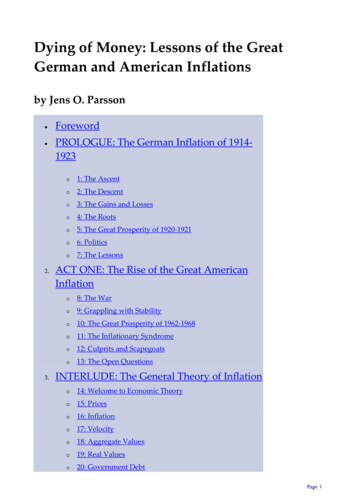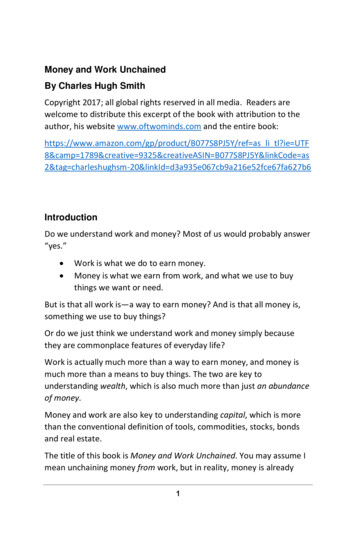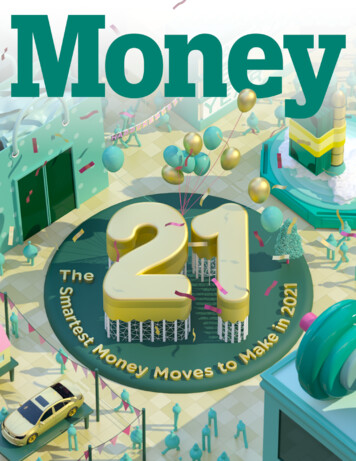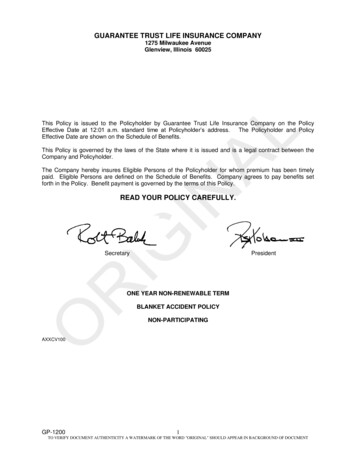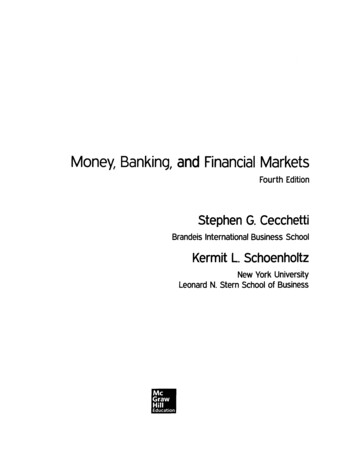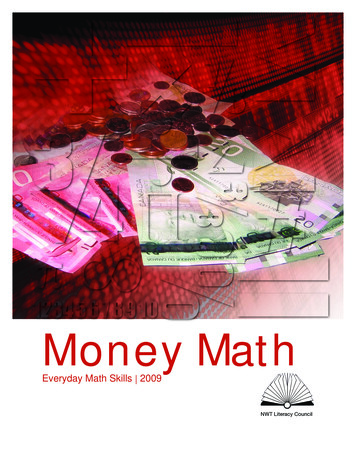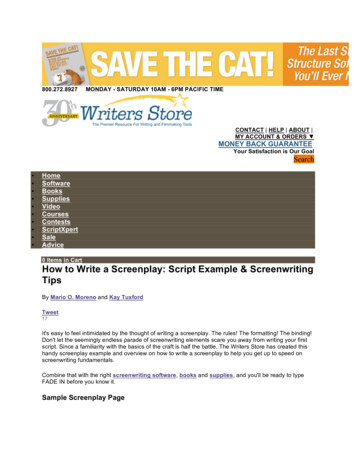
Transcription
800.272.8927MONDAY - SATURDAY 10AM - 6PM PACIFIC TIMECONTACT HELP ABOUT MY ACCOUNT & ORDERS MONEY BACK GUARANTEEYour Satisfaction is Our GoalSearch tXpertSaleAdvice0 Items in CartHow to Write a Screenplay: Script Example & ScreenwritingTipsBy Mario O. Moreno and Kay TuxfordTweet17It's easy to feel intimidated by the thought of writing a screenplay. The rules! The formatting! The binding!Don't let the seemingly endless parade of screenwriting elements scare you away from writing your firstscript. Since a familiarity with the basics of the craft is half the battle, The Writers Store has created thishandy screenplay example and overview on how to write a screenplay to help you get up to speed onscreenwriting fundamentals.Combine that with the right screenwriting software, books and supplies, and you'll be ready to typeFADE IN before you know it.Sample Screenplay Page
Recommended Screenwriting Software for Writing a
ScreenplayWhat is a Screenplay?In the most basic terms, a screenplay is a 90-120 page document written in Courier 12pt font on 8 1/2" x11" bright white three-hole punched paper. Wondering why Courier font is used? It's a timing issue. Oneformatted script page in Courier font equals roughly one minute of screen time. That's why the averagepage count of a screenplay should come in between 90 and 120 pages. Comedies tend to be on theshorter side (90 pages, or 1 ½ hours) while Dramas run longer (120 pages, or 2 hours).A screenplay can be an original piece, or based on a true story or previously written piece, like a novel,stage play or newspaper article. At its heart, a screenplay is a blueprint for the film it will one day become.Professionals on the set including the producer, director, set designer and actors all translate thescreenwriter's vision using their individual talents. Since the creation of a film is ultimately a collaborativeart, the screenwriter must be aware of each person's role and as such, the script should reflect the writer'sknowledge.For example, it's crucial to remember that film is primarily a visual medium. As a screenwriter, you mustshow what's happening in a story, rather than tell. A 2-page inner monologue may work well for a novel,but is the kiss of death in a script. The very nature of screenwriting is based on how to show a story on ascreen, and pivotal moments can be conveyed through something as simple as a look on an actor's face.Let's take a look at what a screenplay's structure looks like.The First Page of a ScreenplayWhile screenplay formatting software such as Final Draft, Movie Magic Screenwriter, MovieOutline and Montage frees you from having to learn the nitty-gritty of margins and indents, it's good tohave a grasp of the general spacing standards.
The top, bottom and right margins of a screenplay are 1". The left margin is 1.5". The extra half-inch ofwhite space to the left of a script page allows for binding with brads, yet still imparts a feeling of verticalbalance of the text on the page. The entire document should be single-spaced.The very first item on the first page should be the words FADE IN:. Note: the first page is nevernumbered. Subsequent page numbers appear in the upper right hand corner, 0.5" from the top of thepage, flush right to the margin.Screenplay ElementsBelow is a list of items (with definitions) that make up the screenplay format, along with indentinginformation. Again, screenplay software will automatically format all these elements, but a screenwritermust have a working knowledge of the definitions to know when to use each one.Scene HeadingIndent: Left: 0.0" Right: 0.0" Width: 6.0"A scene heading is a one-line description of the location and time of day of a scene, also known as a"slugline." It should always be in CAPS.Example: EXT. WRITERS STORE - DAY reveals that the action takes place outside The Writers Storeduring the daytime.SubheaderIndent: Left: 0.0" Right: 0.0" Width: 6.0"When a new scene heading is not necessary, but some distinction needs to be made in the action, youcan use a subheader. But be sure to use these sparingly, as a script full of subheaders is generallyfrowned upon. A good example is when there are a series of quick cuts between two locations, you woulduse the term INTERCUT and the scene locations.ActionIndent: Left: 0.0" Right: 0.0" Width: 6.0"The narrative description of the events of a scene, written in the present tense. Also less commonlyknown as direction, visual exposition, blackstuff, description or scene direction.Remember - only things that can be seen and heard should be included in the action.CharacterIndent: Left: 2.0" Right: 0.0" Width: 4.0"When a character is introduced, his name should be capitalized within the action. For example: The dooropens and in walks LIAM, a thirty-something hipster with attitude to spare.A character's name is CAPPED and always listed above his lines of dialogue. Minor characters may belisted without names, for example "TAXI DRIVER" or "CUSTOMER."DialogueIndent: Left: 1.0" Right: 1.5" Width: 3.5"
Lines of speech for each character. Dialogue format is used anytime a character is heard speaking, evenfor off-screen and voice-overs.ParentheticalIndent: Left: 1.5" Right: 2.0" Width: 2.5"A parenthetical is direction for the character, that is either attitude or action-oriented. With roots in theplaywriting genre, today, parentheticals are used very rarely, and only if absolutely necessary. Why? Tworeasons. First, if you need to use a parenthetical to convey what's going on with your dialogue, then itprobably just needs a good re-write. Second, it's the director's job to instruct an actor on how to deliver aline, and everyone knows not to encroach on the director's turf!ExtensionPlaced after the character's name, in parenthesesAn abbreviated technical note placed after the character's name to indicate how the voice will be heardonscreen, for example, if the character is speaking as a voice-over, it would appear as LIAM (V.O.).TransitionIndent: Left: 4.0" Right: 0.0" Width: 2.0"Transitions are film editing instructions, and generally only appear in a shooting script. Transition verbiageincludes: CUT TO:DISSOLVE TO:SMASH CUT:QUICK CUT:FADE TO:As a spec script writer, you should avoid using a transition unless there is no other way to indicate a storyelement. For example, you might need to use DISSOLVE TO: to indicate that a large amount of time haspassed.ShotIndent: Left: 0.0" Right: 0.0" Width: 6.0"A shot tells the reader the focal point within a scene has changed. Like a transition, there's rarely a timewhen a spec screenwriter should insert shot directions. Once again, that's the director's job.Examples of Shots: ANGLE ON -EXTREME CLOSE UP -PAN TO -LIAM'S POV --Recommended Books for Writing a Screenplay
Spec Script vs. Shooting ScriptA "spec script" literally means that you are writing a screenplay on speculation. That is, no one is payingyou to write the script. You are penning it in hopes of selling the script to a buyer. Spec scripts shouldstick stringently to established screenwriting rules.Once a script is purchased, it becomes a shooting script, also called a production script. This is a versionof the screenplay created for film production. It will include technical instructions, like film editing notes,shots, cuts and the like. All the scenes are numbered, and revisions are marked with a color-codedsystem. This is done so that the production assistants and director can then arrange the order in whichthe scenes will be shot for the most efficient use of stage, cast, and location resources.A spec script should NEVER contain the elements of shooting script. The biggest mistake any newscreenwriter can make is to submit a script full of production language, including camera angles andediting transitions. It can be very difficult to resist putting this type of language in your script. After all, it'syour story and you see it in a very specific way. However, facts are facts. If you want to direct your script,then try to go the independent filmmaker route. But if you want to sell your script, then stick to theaccepted spec screenplay format.Screenplay Formatting SoftwareScreenwriting software makes producing an Industry-standard script simple and straightforward.Programs like Final Draft and Movie Magic Screenwriterput your words into proper screenplay formatas you type, letting you focus on a well-told story rather than the chore of margins and spacing.There’s also a wide spectrum of outlining and development software at the ready to help you get yourthoughts together before you begin writing. Popular story development software includes Dramatica Pro,a step-by-step guide to the storytelling process, Contour, a character-based structuring system, andSavethe Cat!, a program centered on successful screenwriter Blake Snyder’s own proven methods.
And if you want a program that combines story development and formatting? Check out Movie Outline,an all-in-one development package that uses step outlining to build your story, scene-by-scene, andMontage, which includes both outline and submission tracking functions.Script Presentation and BindingJust like the format of a script, there are very specific rules for binding and presenting your script. The firstpage is the title page, which should also be written in Courier 12pt font. No graphics, no fancy pictures,only the title of your script, with “written by” and your name in the center of the page. In the lower lefthand or right-hand corner, enter your contact information. In the lower left-hand or right-hand corner youcan put Registered, WGA or a copyright notification, though this is generally not a requirement.Sample Title PageBelow is a list of items you need to prepare your script to be sent out: Script Covers, either linen or standard card stockThree-Hole Punched PaperScreenplay Brass Fasteners (also called Brads), Acco number 5 size 1 1/4-inch for scripts up to120 pages; Acco number 6 size 2-inch for larger scriptsScript Binding Mallet (optional)Screenplay Brass WashersScript MailersFollow these directions to properly bind your script:1. Print your title page and script on bright white three-hole punched paper.2. Insert the title page and the script into the script cover. The front and back covers remain blank.They are just there to protect your script. And remember: pictures and text on script covers screamamateur.3. Insert two brass fasteners in the first and third holes. Do NOT put a fastener in the middle hole.4. Flip the script over, and slide the brass washers over the arms of the fasteners. Spread the arms ofthe fasteners flat against the script. Use a Script Binding Mallet to ensure a tight, flat fit.5. Use the flat, self-seal script mailers to send your scripts out to buyers.Materials for Further ExplorationNow that you understand screenplay basics, you’re no doubt ready to continue your exploration of thecraft and go beyond learning how to write a movie script. The books listed below are some of The WritersStore’s favorite guides to screenwriting.The Screenwriter's Bible: A Complete Guide to Writing, Formatting, and Selling Your ScriptWondering how to write a script? This first-rate screenwriting primer provides a concise presentation ofscreenwriting basics, along with query letters, useful worksheets, checklists, sample scenes and more tohelp you break into screenplay writing.From Script to ScreenWhat goes into the making of Hollywood's greatest motion pictures? Join Linda Seger and EdwardWhetmore as they examine recent screenplays on their journey from script to screen.
Hollywood Standard: The Complete and Authoritative Guide to Script Format and StyleThe Hollywood Standard describes in clear, vivid prose and hundreds of examples how to format everyelement of a screenplay or television script.Save the Cat!This ultimate insider's guide reveals the secrets that none dare admit, told by a show biz veteran who'sproven that you can sell your script if you can Save the Cat.Interested in taking a screenwriting class? Visit our courses section for webinars, live seminars, onlinecourses, one-on-one instruction and on-demand courses. You can download a free webinar on "How toWrite a Screenplay" from magazine site, ScriptMag.com.Tweet17Meet the Author: Mario O. MorenoMario O. Moreno is a Story Specialist for The WritersStore by day, and a budding screenwriter by night.Since earning a bachelor's degree in Film from MiamiInternational University, where he won an OutstandingFilmmaker Award, Mario has written numerous featurefilm scripts, been an Academy NichollFellowships Quarterfinalist, Final Draft's Big BreakSemifinalist and Austin Film Festival Finalist, and haspitched to exe.Most Popular ItemsFinal Draft 9 - ProEdition - Download 199.99
45 Master Characters:Mythic Models forCreating OriginalCharacters - eBook(Consumer PDF) 16.99Constructing CompellingCharacters - On DemandEdition 99.99
What Would YourCharacter Do? - eBookEdition (PDF) 15.99Writer's Series: CreateCharacters AudiencesConnect To - THEPROTAGONISTAUDIENCES ROOTFOR 79.99Screenwriting Pro Software - Online screenwriting software that's always ready for actionScreenwriters University Classes - Online writing courses for screenwritingScript Magazine - Your connection to screenwriting successAffiliate Program - Place links on your site and earn commissionsCopyright 1982 - 2016 The Writers Store Incorporated. All rights reserved.The use of this website signifies your agreement to the Terms of Use.The Writers Store eZineJoin Become a fan of The Writers Store
Follow us on Twitter - news and specials
A screenplay can be an original piece, or based on a true story or previously written piece, like a novel, stage play or newspaper article. At its heart, a screenplay is a blueprint for the film it will one day become. Professionals on the set including the prod
